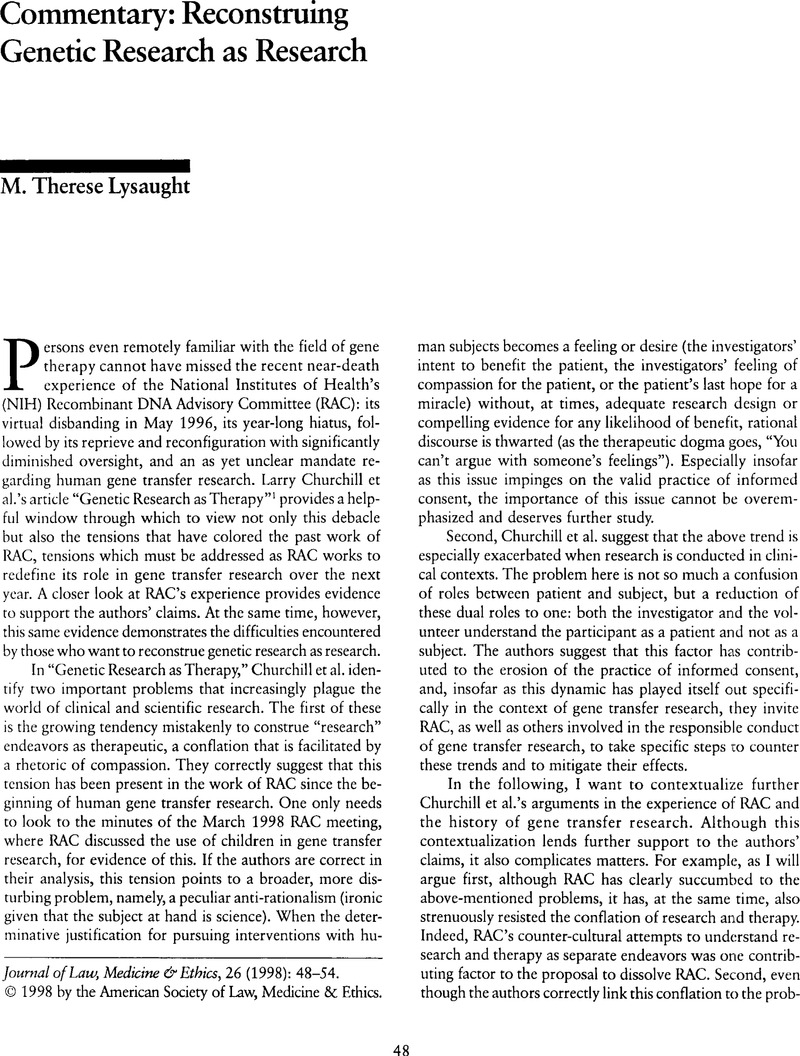Appendix D, “Major Actions Taken Under the NIH Guidelines,” presents a different and perhaps more intractable set of issues. Appendix D lists the various human gene transfer protocols approved by RAC, in addition to a number of recombinant DNA protocols. This section documents well the conceptual shifts regarding human gene transfer research that have occurred since 1989. For example, the early entries use only the term
patient, the later entries use only the term
subject, and the middle entries mix the terms. The appendix is consistent in referring to the protocols as
experiments, but likewise vacillates between the phrases
gene therapy experiment and
gene transfer experiment. Early on, these phrases were used to differentiate between potentially therapeutic protocols and gene-marking protocols. Relatively quickly, the use of the phrase
gene therapy essentially disappears; this reflects the March 1993 decision of RAC that the phrase
gene transfer should be used for all unproven, phase I trials. See Recombinant DNA Advisory Committee, National Institutes of Health, “Minutes of Meeting, March 1–2, 1993” (visited Apr. 12, 1998) <
http://www.nih.gov/od/orda/docs.html>. Thus, Appendix D provides an interesting window into the historical evolution of RAC's conceptualization of these issues. However, insofar as Appendix D contains the record, it is unclear how amenable it is to revision. The phrase
gene therapy will be the most difficult to eliminate insofar as it used in the context of the recently instituted program “Gene Therapy Policy Conferences,” created by Harold Varmus. This comprises the bulk of the uses of this phrase in the Guidelines.
.+Thus,+Appendix+D+provides+an+interesting+window+into+the+historical+evolution+of+RAC's+conceptualization+of+these+issues.+However,+insofar+as+Appendix+D+contains+the+record,+it+is+unclear+how+amenable+it+is+to+revision.+The+phrase+gene+therapy+will+be+the+most+difficult+to+eliminate+insofar+as+it+used+in+the+context+of+the+recently+instituted+program+“Gene+Therapy+Policy+Conferences,”+created+by+Harold+Varmus.+This+comprises+the+bulk+of+the+uses+of+this+phrase+in+the+Guidelines.>Google Scholar




